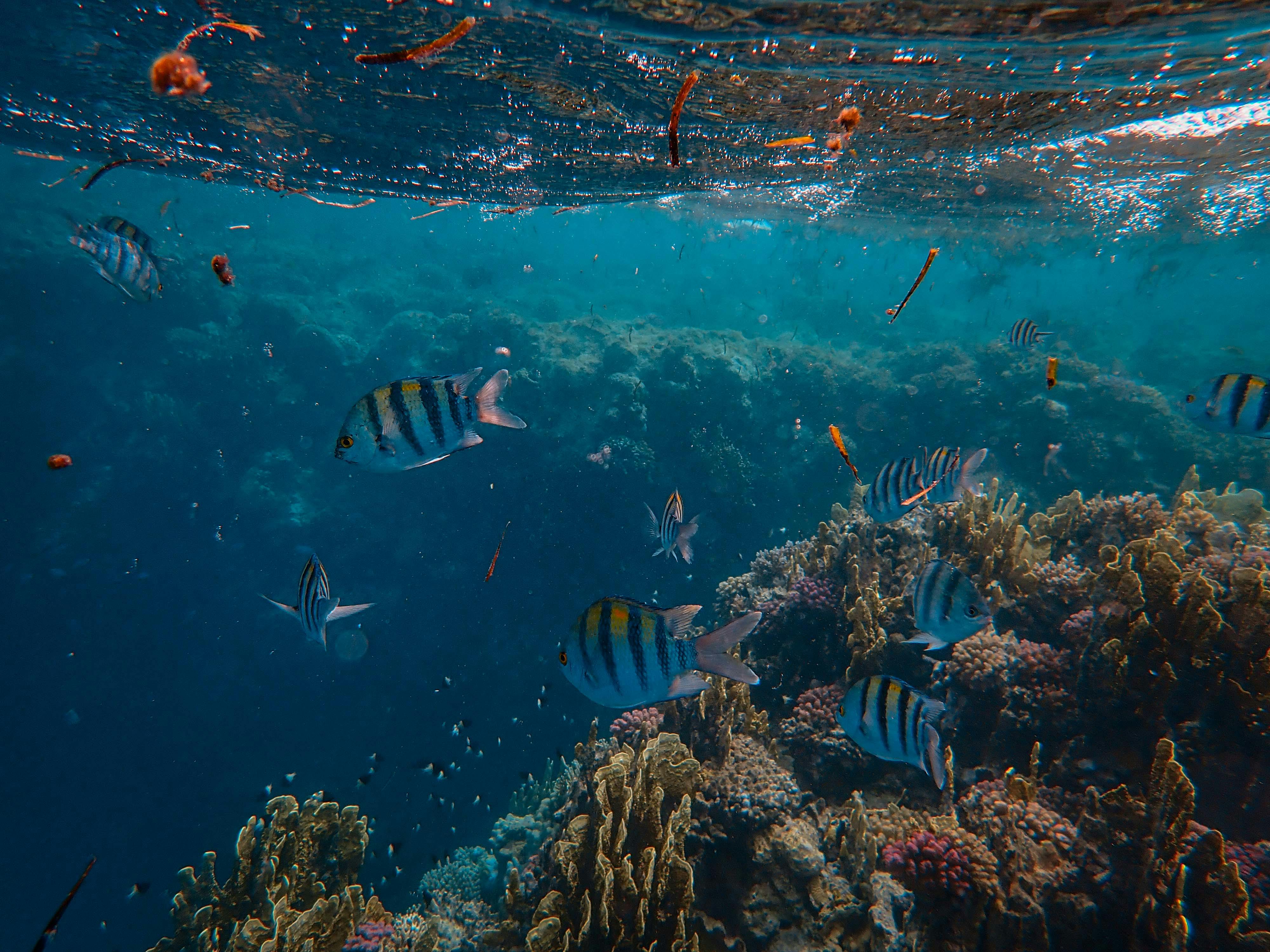
How to Properly Feed Your Plecos: Essential Diet Guide for Healthy Aquariums in 2025
Plecos are popular freshwater fish known for their algae-eating habits and essential role in maintaining aquarium health. Feeding them properly is crucial to ensuring their growth, health, and overall well-being. In this comprehensive guide, we'll explore the various dietary needs of plecos, the best foods available, and how to create an optimal feeding schedule. By understanding their nutritional requirements, you can ensure your plecos thrive in a healthy aquarium environment.
Feeding plecos involves more than just tossing in a few flakes; it's about providing a balanced diet that caters to their specific needs. This guide will discuss the types of food suitable for different pleco species, helpful tips for feeding methods, and advice on how to maintain water quality while feeding. We will cover plecos' care and popular tank mates to help foster a harmonious aquarium ecosystem. By following these guidelines, you'll contribute significantly to your plecos' long and healthy lives.
Let's dive into the essential components of a proper pleco diet!

Understanding the Nutritional Needs of Plecos
Building on the basics of pleco care, understanding their nutritional needs is key for all aquarium enthusiasts. Plecos require a mix of protein and vegetable-based foods to maintain a balanced diet. Unlike some fish, plecos are not solely herbivorous; they benefit from a variety of food types to achieve optimal health.
The Importance of Protein in Plecos Diet
Protein is crucial for plecos, especially during their growth phases. Protein sources include high-quality sinking pellets designed specifically for plecos, live food options like brine shrimp or bloodworms, and frozen foods that offer additional nutrition. Incorporating protein into their meals helps with tissue repair and growth, ensuring that your plecos develop robustly.
Aquarium owners can easily find ready-made, protein-rich plecos food or supplement their diet with specific protein sources. Using a mix of these options can meet their dietary requirements effectively, improving overall health. Remember to feed protein periodically, as excess protein can lead to health issues.
Vegetable-Based Food for Plecos
Vegetables should also be a staple in your plecos' diet as they help provide essential vitamins and minerals. Some favorites include zucchini, cucumber, and spinach. These veggies should be prepared by cutting them into small pieces or blanched, making them easier for plecos to consume.
It's vital to remember that while plecos enjoy vegetables, the amount fed must be monitored to avoid waste accumulating in the tank. A careful balance between plant-based and protein-rich foods can support their health and well-being.
Feeding Techniques that Foster Healthy Habits
Establishing effective feeding techniques is essential in building a routine that caters to your plecos' dietary preferences. Sinking pellets and algae wafers are often preferred, as they mimic their natural grazing habits. Placing these foods in strategic spots around the tank encourages plecos to explore and nibble.
Another technique involves rotating different foods to prevent dietary boredom and ensure a complete range of nutrients. Experimenting with various items like blanched vegetables or specially formulated pleco snacks can keep them engaged and healthily nourished.
The Role of Supplements in Your Plecos Diet
In addition to regular feeding, supplements can play an important part in enhancing the nutritional value of your plecos' diet. Vitamins and minerals, particularly calcium, contribute to strong bone development. Applying supplements during feeding, either incorporated into their meals or used as treats, can support your plecos' overall health.
Consider natural supplements, such as garlic or spirulina, to boost the immune system and improve their appetite. This can lead to healthier feeding habits and better care management for your plecos.
Monitoring Feeding Frequency for Optimal Growth
Feeding frequency varies depending on the plecos species and their growth stage. Generally, adult plecos can be fed every other day, while younger or growing plecos may require daily meals to meet their higher nutritional demands. Monitor their feeding habits; adjust the frequency based on growth rate and health indicators.
Overfeeding can lead to obesity and water quality issues, so always stay attentive to the amount being consumed. Establishing a consistent feeding schedule boosts your plecos' health while maintaining optimal aquarium conditions.
Types of Food Suitable for Different Pleco Species
With these fundamentals established, we'll explore the various types of food to cater to your pleco's species-specific dietary needs. Different plecos species, such as the common pleco, bristle nose, and clown pleco, have unique preferences and dietary requirements impacting their growth and health.
Common Pleco Feeding Habits
The common pleco is known for being an efficient algae eater, and it benefits from algae wafers or a mixture of greens and protein sources. Since they can grow quite large, they require substantial amounts of food to thrive. Providing adequate amounts of algae on decorations will further meet their needs, contributing to their grazing behavior.
Bristlenose Pleco Diet Essentials
Bristlenose plecos are smaller and have distinct dietary needs. They thrive with high-quality sinking pellets, fresh vegetables, and occasional protein sources. Introducing a variety of foods can help maintain their health and prevent algae overgrowth in the tank.
Clown Pleco Favorite Foods
Clown plecos prefer a mixture of vegetable-based and protein-rich foods, favoring repurposed algae in their environment. Identifying the best foods for clown plecos may include sinking pellets and driftwood for boredom prevention, allowing them to flourish in their aquatic home.
Understanding Food Preferences by Age
Feeding plecos according to their age is crucial for health optimization. Baby plecos typically need finely crushed foods or specially designed baby food that is more manageable in size. This promotes better digestion and a healthier growth rate, laying a strong foundation for their future life.
As they mature, different food types may be introduced gradually, ensuring the dietary variety remains a significant focus for sustaining their health and growth.

Maintaining Water Quality During Feeding
Connected to this principle is the importance of maintaining water quality throughout feeding periods. Poor water conditions can affect your plecos' health, making it imperative to use feeding techniques that minimize waste.
Impacts of Overfeeding on Water Quality
Overfeeding can lead to uneaten food decomposing in the tank, causing ammonia spikes and deteriorating water quality. Regular monitoring of ammonia and nitrate levels is essential to prevent potential health risks amongst your plecos. Adapting feeding habits can help maintain a cleaner environment within the aquarium.
Frequency of Water Changes
The frequency of water changes can depend on feeding practices. Limited feeding can allow you to maintain longer intervals between water changes, while intensive feeding may necessitate more frequent changes to ensure a healthy living environment. Balancing aquarist duties with proper feeding practices will contribute positively to your plecos' health.
Using a Gravel Vacuum
Employing a gravel vacuum during regular maintenance helps clean uneaten food from the substrate, contributing to improved water quality. Keeping the tank tidy prevents nitrate buildup, providing a healthier habitat where plecos can thrive. Prioritizing cleanliness will allow for healthier, more vigorous fish.
Plecos Tank Mates and Compatibility
Having the right tank setup and compatible tank mates is vital in fostering a peaceful environment while catering to your plecos' needs. By considering their behaviors and preferences, you can ensure safe and harmonious community settings.
Best Tank Mates for Plecos
While plecos can get along with various species, some tank mates may be more suitable than others. Fish like tetras, barbs, and certain cichlids make great companions, as they share similar environmental requirements and temperatures, contributing to an overall balanced aquarium ecosystem.
Avoiding Aggressive Species
When it comes to selecting tank mates, avoid aggressive species that might outcompete plecos for food or space. Large or territorial fish could stress your plecos, impacting their feeding behavior or overall health. Proper research on compatibility is crucial for building a thriving community tank.
Creating a Comfortable Environment
Conditioning the tank environment fosters a more comfortable atmosphere for plecos interaction with their tank mates. Integrating plants and driftwood provides hiding spots and grazing opportunities, ensuring plecos feel secure while exploring their surroundings. This setup promotes healthy feeding habits and reduces stress while feeding.
Common Feeding Challenges with Plecos
Taking this concept further, it's important to discuss common feeding challenges that many aquarium keepers encounter with plecos. Understanding these issues enables owners to address them properly and optimize feeding routines.
Enforcing a Balanced Diet
Balancing a diet for plecos may prove challenging, especially concerning mixing vegetable and protein sources. To overcome this challenge, consider rotating food types consistently and monitoring the fish's reactions to different foods.
Addressing Food Preferences
Plecos can develop specific food preferences that can lead to a lack of dietary variety. By experimenting with various foods and encouraging grazing behaviors, aquarium owners can ensure a well-rounded diet and promote optimal health and growth.
Feeding Time Management
Managing feeding times can also be challenging in multi-species tanks. By implementing a feeding schedule and observing fish interactions during feeding can minimize competitive behavior amongst fish, allowing plecos to feed effectively alongside their tank mates.
Frequently Asked Questions About Plecos Diet
What are the best foods for plecos?
The best foods for plecos include high-quality sinking pellets, algae wafers, fresh vegetables, and occasional protein sources like brine shrimp or bloodworms. A balanced diet ensures optimal growth and health.
How often should I feed my plecos?
Adult plecos are generally fed every other day, while younger, growing plecos may require daily meals. It's crucial to monitor their health and adjust feeding frequency based on their needs.
Can plecos eat live food?
Yes, plecos can eat live food, including brine shrimp and bloodworms, which help provide a protein boost. However, it's essential to offer assorted food types to ensure a balanced diet.
How do I know if I’m overfeeding my plecos?
Signs of overfeeding include uneaten food accumulating in the tank, poor water quality, and potential health issues in your plecos. Monitor their feeding habits and limit the amount of food accordingly.
Are plecos compatible with my other fish?
Plecos generally get along with peaceful fish species, but it's important to avoid aggressive or territorial tank mates. Researching compatibility before introducing new fish can ensure a harmonious environment.
By providing appropriate diets, maintaining clean conditions, and carefully managing tank mates, you will create a thriving environment for your plecos. Implement these best practices to maximize their health and adaptability in your aquarium!